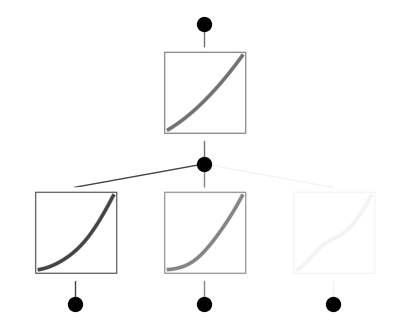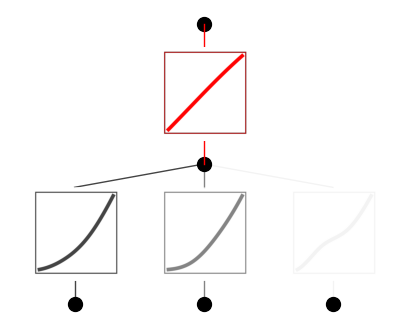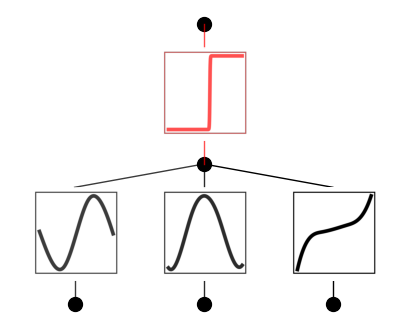Example 13: Phase transition
In this example, we will use KAN to learn phase transitions in data. Phase transition is an important concept in science. We consider a toy example \(f(x_1,x_2,x_3)\) is 1 if \(g(x_1,x_2,x_3)>0\), and is 0 if \(g(x_1,x_2,x_3)<0\). \(g(x_1,x_2,x_3)={\rm sin}(\pi x_1)+{\rm cos}(\pi x_2)+{\rm tan}(\frac{\pi}{2}x_3)\).
Intialize model and create dataset
from kan import KAN, create_dataset
import torch
device = torch.device('cuda' if torch.cuda.is_available() else 'cpu')
print(device)
model = KAN(width=[3,1,1], grid=3, k=3, device=device)
# create dataset
f = lambda x: (torch.sin(torch.pi*x[:,[0]]) + torch.cos(torch.pi*x[:,[1]]) + torch.tan(torch.pi/2*x[:,[2]]) > 0).float()
dataset = create_dataset(f, n_var=3, device=device)
cuda
checkpoint directory created: ./model
saving model version 0.0
torch.mean(dataset['train_label'])
tensor(0.5060, device='cuda:0')
model(dataset['train_input'])
model.plot(beta=10)

# set the last activation to be tanh
model.fix_symbolic(1,0,0,'tanh',fit_params_bool=False)
saving model version 0.1
model(dataset['train_input'])
model.plot(beta=10)

model.fit(dataset, opt="LBFGS", steps=50);
| train_loss: 7.71e-02 | test_loss: 1.17e-01 | reg: 2.43e+02 | : 100%|█| 50/50 [00:09<00:00, 5.32it
saving model version 0.2
model.plot(beta=10)
